Tibetan Villages of Jiuzhaigou
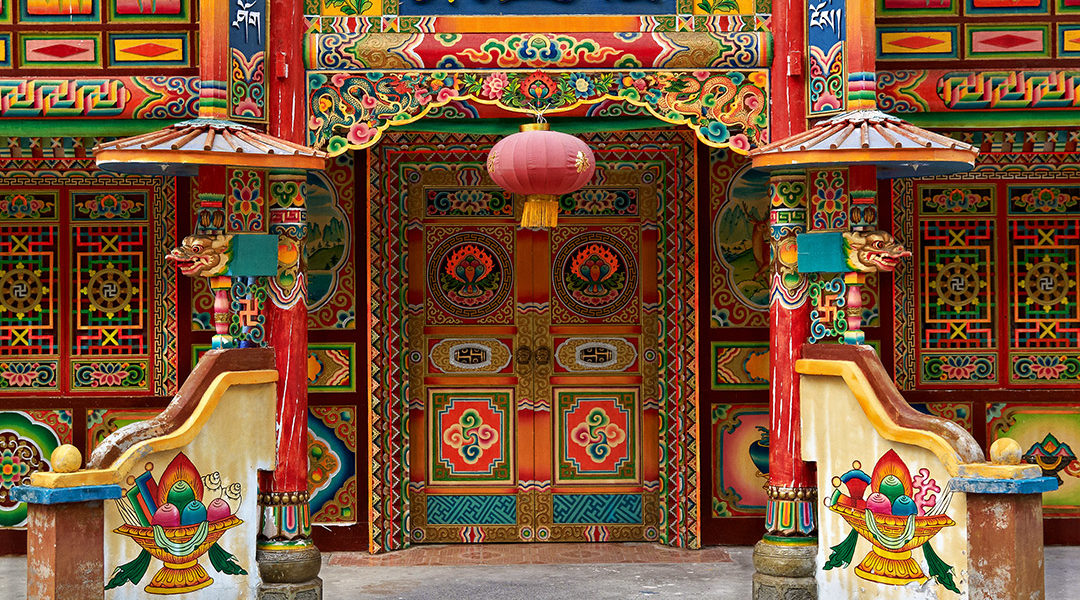
We walked down the road in late afternoon, passing by a few villages along the way.
The sun is low, but enough light to get some decent shots… the issue is… in the mountains here sun is hot when you are in it, but the shade is ice cold. So, walking around in the day, in the open valley, can be exhausting if you dress to warm. I got sunburn on my nose and ears the first day. Then in the shady areas at the same time, you have to put on a coat for sure. As the sun goes down the valley is all shade and ice cold. Night usually brings snow.

Quite a long way to go to get down the valley.

We lucked out and came across a Tibetan village.

Each little neighborhood has these white offering shrines. People come, pray and leave a cash offerings. I couldn’t get a decent answer on where this money goes. If the owner collects it, then it is a nice racket. A lot of the money appears to have been there for a while, but in the mountains of China, everything ages quickly.


Prayer flags span out from the top.

In case you forget the sutra, it’s written on a stone here for you.



The homes here have some very nice gardens. Here’s a nice handheld macro.


This is a small market and restaurant (and probably also a home).

Their garage door.

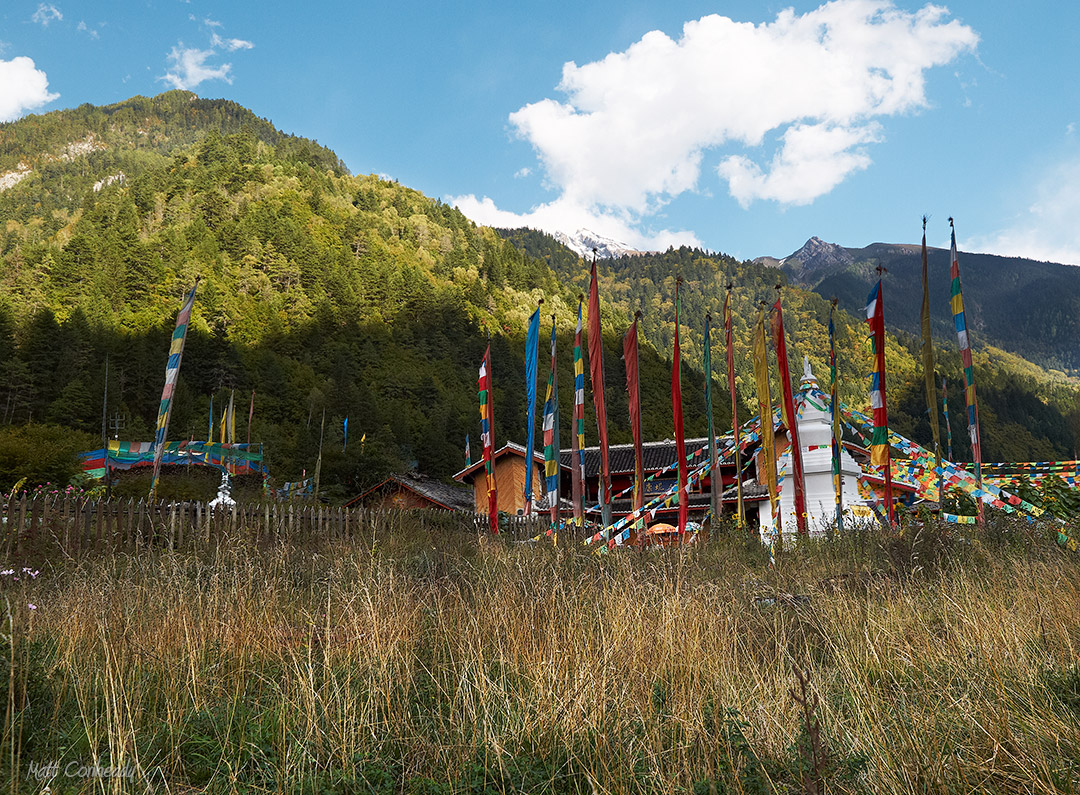
I find another one of those shrines in a garden.

Colors of the flags symbolize: blue=sky; white=clouds; red=fire, green=water; yellow=earth.

A mani pile



The swastika is a symbol of balance to Buddhism, but in places where westerners could go, they are often modified from their original form, in order to not offend.


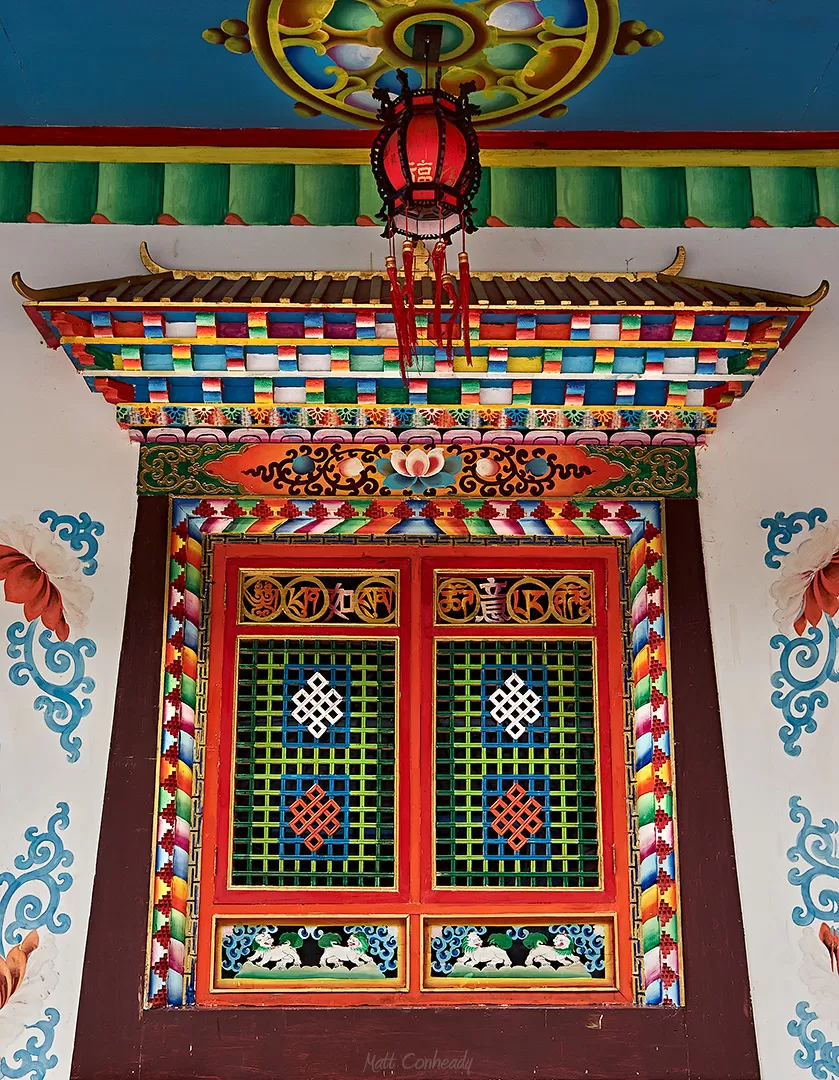
The wind horse carries prayers from earth to heaven. This belief actually pre-dates Buddhism. You can see this symbol everywhere, including prayer wheels and flags.


Joni stops at this cafe to check her makeup. Need to look your best when hiking in the mountains.

Hand-carved, hand-painted woodwork on all the homes. Where do they get the bright colors? Traditionally, from stone minerals, trade (southwest china is along the silk road), and local fungi. The camera does not do these colors justice!
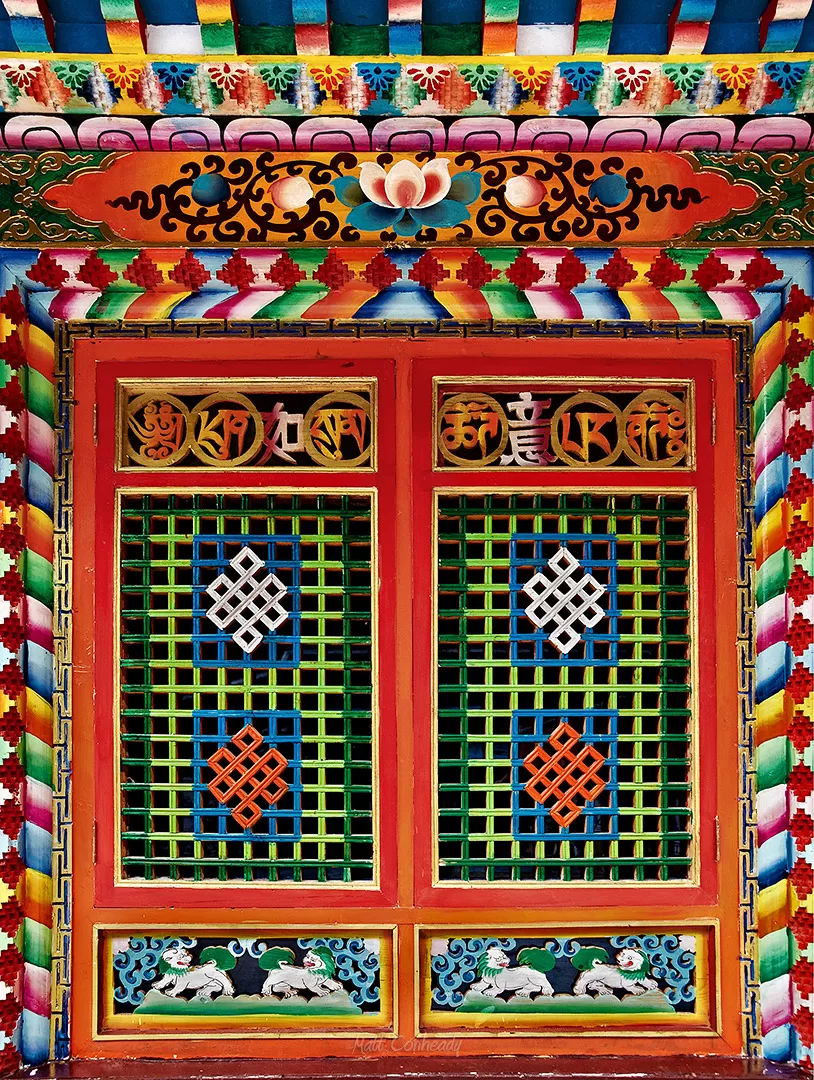

This is the very top of a Mani Pile that is about my height. Mani stones are stones inscribed or painted with small sutras/mantras. Passers by will leave a stone on the mani pile, which is the equivalent of reciting that sutra. Some piles, particularly the ones alongside roads, often grow miles in length. Piles are often wrapped in prayer flags and topped with Yak skulls, which helps the Yak’s souls reach heaven.

This is a restaurant. Notice the rack of bronze prayer wheels to the left. Just below the wheels are arrows indicating the clockwise directions one should take when spinning the wheels. Spinning a payer wheel, which is engraved with a sutra, is the equivalent of reciting that sutra.

I’m not sure about this depiction. The three heads is similar to that found on the kila daggers and other objects that ward off evil spirits. The wheel reminds me of the wheel of life, but it’s simpler, has sutras in it. In the center is the “Ohm” symbol.

Everything is hand painted.



I’m not sure what this is.

Quite a long way to go to get out of the valley before dark. But we can’t resist exploring.


Here’s a nice little restaurant/shop

Closed up for the night.

Joni and I circle the buildings in the village checking out the designs painted on them.

“Owner’s Building”… administrative offices of the village.

We were running out of light… and we still had miles to walk to get to the bus…. so we snapped photos of the art to check out later.

Being in a city of tens of millions for over a week, I had gotten used to constant noise. Traffic, advertisements, people, machines… it’s annoying at first but easy to get used to. Then I come to the mountains and all of that is removed again. No traffic, no planes overhead. It’s just the sound of millions of these prayer flags.


Restaurant





We are rushing down the road to beat the light, and stopping wherever we see a good view – which is quite often.








We saw what looked to be a really old and possibly abandoned village off the distance, but didn’t have time to check it out.

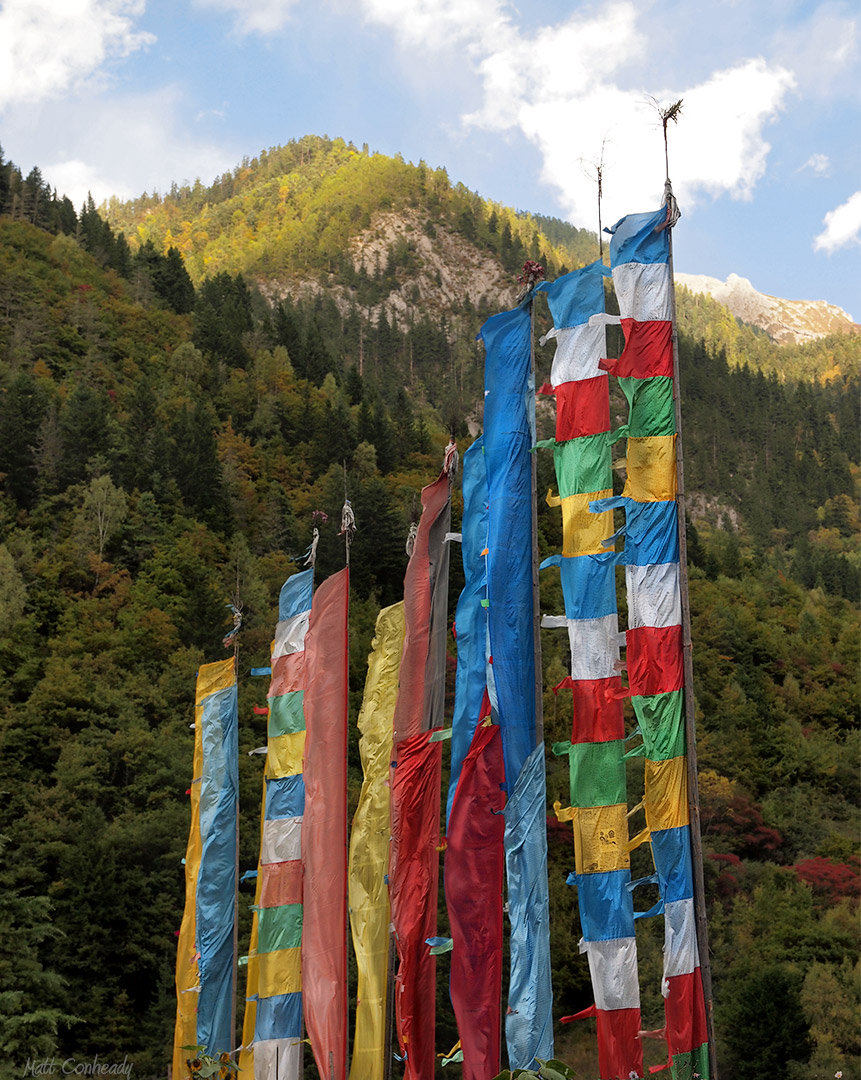



Mani Pile

We jogged the rest of the way, and luckily I was feeling quite alright. We made it to the visitor center back in Jiuzhaigou village, we hit a few shops and I realized I had my appetite back. In fact, I was starving. Joni isn’t not too hungry, but she can’t resist eating some Dico’s fried chicken. I ate it all!

Dico’s was on the second floor of a souvenir shop. Panda things are popular here as the valley is (or was) one major habitat for the Giant Panda. I bought a cool photo book of the valley so I could see all the things I missed.
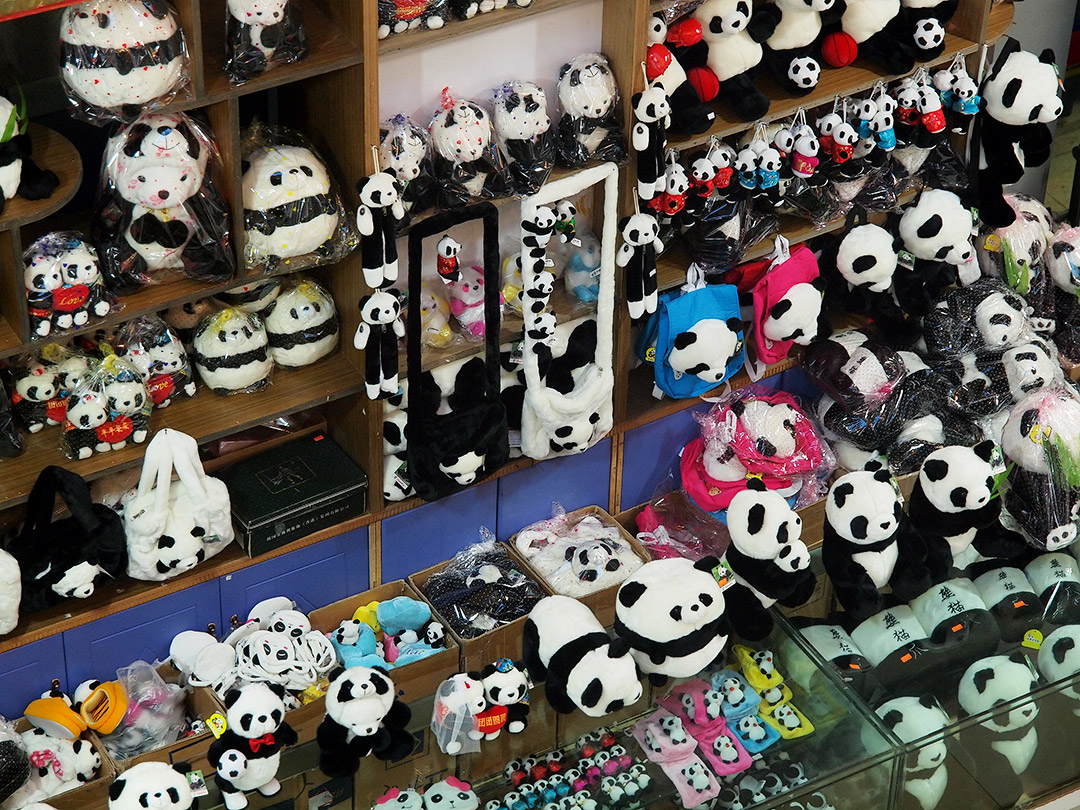
We head to the hotel, and later that night I puked all that chicken up.
The next morning I still feel like puking and the 10 hour bus ride, we are told, is going to take 4-5 hours longer due to construction… and the bus, with no heat, is covered in morning frost. Not a great day for me. I’m super nervous about vomiting all over the bus. I grab some hard candy and white grape juice for sustenance and try to sleep the way back.
I made it.
Sichuan Earthquake
I mentioned before, the valley that goes from Chengdu to Jiuzhaigou was the scene of catastrophic devastation of the 2008 Sichuan earthquake. On the way to Jiuzhaigou I guess I was sitting on the wrong side of the bus, because I didn’t see much of the Fujiang River and the devastation of the old highway and villages. This is where the 8.0 quake hit on Monday May 12, 2008. Within 2 minutes an estimated 80% of buildings in the region were destroyed.
As you can see, from the photos I snapped from the bus, the steep cliffs here are fragile towers of Limestone (not hard granite). They created rivers of boulders that crushed villages, destroyed dams, and completely obliterated the large highway on the other side of the river.
Today, that side of the river, as well as many of the villages that were there for centuries, are abandoned. The Chinese government erected signs commemorating lost homes and towns, giving details to what was lost. Cars, trucks, foundations, and people crushed by boulders still sit on that old highway. What you can see destroyed is almost as haunting as what you cannot. Large mountains of boulders cover what was once a village of thousands. An estimated 68,000 people where killed. The amount of rock is impossible to remove. Not all victims can be counted. That side of the river cannot be reclaimed.
So much rock fell from the sheer cliffs of the valley, that it actually filled the river bed, causing the bed to narrow, the water to rise, and it to flood out of control. More homes, crops and lives were lost.
A sign commemorates a small village covered under the debris.

3-lane highway gone.

Edge of a village wiped out

Upper village wiped out, so the a lot was rebuilt below.

Remnants of the old highway.

Homes… swept away.

The river is a turbulent mess of debris and white water. Construction on the new major highway (the one that our bus was on) was underway on this side of the valley.


Write a Reply or Comment